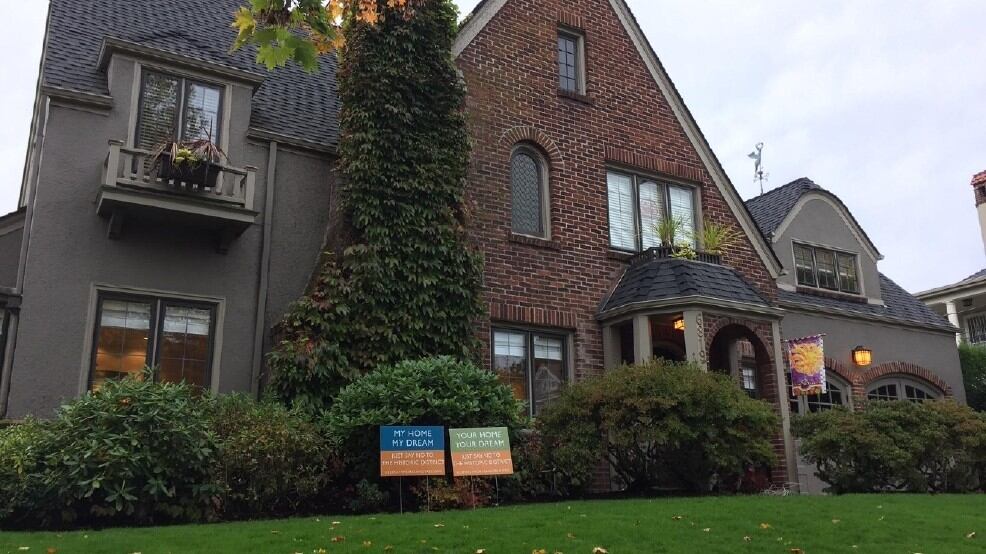Citing technical reasons, the state is recommending against turning the Southeast Portland neighborhood of Eastmoreland into a historic district—at least for now.
In an application filed today with the National Park Service, the Oregon State Historic Preservation Office asks for more time to sort through the technical matter of how many owners have property in the neighborhood.
That's important because notarized objections from 50 percent of private owners, plus one, would halt the process of designating the neighborhood a historic district.
Since last fall, the fight over historic designation has pitted neighbor against neighbor in the affluent neighborhood south of Reed College. Last week, an Eastmoreland resident sued the state in an effort to halt the process.
So far opponents have submitted 925 objections. By the state's current count, there are 2,074 property owners. But state officials say they need more time to get an accurate count of how many owners there are.
"While the submitted owner list represents our best efforts to date, concerns about it have been raised and unsettled ownership issues remain," says Deputy State Historic Preservation Officer Christine Curran in a statement.
"As a result, we do not have confidence that the list is indeed complete and accurate. I therefore do not recommend that the Eastmoreland Historic District be listed in the National Register of Historic Places at this time. Should the National Park Service concur with my finding, the Oregon SHPO asks that the nomination be returned to our office with guidance on how to resolve the procedural requirements issue."
To meet the deadlines of the process, the state had to reach an official determination today, but essentially asked for more time. The complications come from how to count ownership trusts and other ways of own property.
The Eastmoreland Neighborhood Association pushed for the historic district, calling for adding an extra safeguard against demolishing homes.
Opponents noted the neighborhood hadn't seen significant demolitions.
"The board's worked hard for about three years to try to get the city to deal with this through coding, zoning and through the comprehensive plan," Eastmoreland Neighborhood Association's president, Tom Hanson, told OPB last fall.
"While we had considered historic district designation in the past, we had thought the other mechanisms were more appropriate to work through the city. But when they were not fruitful, then we moved to considering historic district designation."
Update 1:50 pm:
Robert McCullough, treasurer of the neighborhood association and supporter of the historic district designation, was surprised by the state's lack of clarity on who counts as an owner in the neighborhood. "The definition is set out in federal," he says. "We should follow the federal law."
Full press release below:

